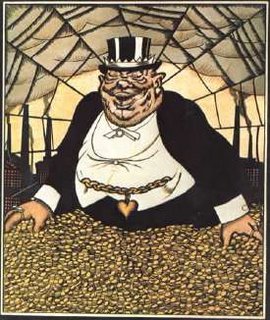Did you know that their are Christians in Palestine. And they are farmers. Did you know that they experience the same repression that their fellow Palestinians do at the hands of the Zionist occupation. Well of course you did.
Now here is an interesting point of view from one of them. A pig farmer whose land is being annexed by Israel and their Berlin Wall. Their bulldozers have destroyed the basic farm economy of the Palestinians. Their security wall and military outposts do not allow Palestinians access to the market. And they have been doing this for years before Hamas took power. So lets not use that as an excuse. The Wall Destroys Palestine's Olives, Farmers and Agriculture
Like their attack on Lebanon their occupation and domination of the Palestinians is as much an economic war as it is a political one. They do not want competition from the Palestian farmers whose lands are fertile and productive. And have been the source of the agriculture exports of both countries since Israel was formed. So they destroy their economic competition and have done so since 1967. Now they are doing it with bulldozers, illegal settlements and the security wall.
Palestinian farmers fear advance of West Bank wall
Fellow farmers in Jayyous, in the region known as the “garden” of the northern West Bank, made a living selling their fruits and vegetables before the wall was built there in 2004. Up to half of the population of 3,500 people now get aid from organisations such as the World Food Programme.
The wall separates the farmers of Jayyous from two-thirds of their land and six water wells, which are now on the Israeli side of the barrier. Two gates that were supposed to allow them access were closed by Israel during harvest times and fruit rotted on the vines.
Mr Sous does not want aid. The Hamas-run Palestinian Authority is under a western aid embargo aimed at moderating the militant group but Mr Sous has no need of aid, so far. “I don’t want to sell my land or leave. I just need to be able to make my living.”
See the farmers don't want Aid they want Trade. This should appeal to the capitalist sensabilities of the the right wing in North America. Any Blogging Tories, neo-cons, liberaltarians or free traders willing to take up their cause? Nope, they would rather critize CUPE for calling for a boycott of the Israeli Aparthied State.
A state which benefits by its monopoly of power over the farmers, their competitors in Palestine. A state which uses the Palestinians as a cheap labour source. A state which isolates them and keeps them imprisoned in occupation zones.
The agricultural sector in Gaza has a significant position within the local society as it supplies food products to the majority of the local population. Moreover, its contribution to the economy of the area is noteworthy as an earner of foreign exchange. Its share of the GDP is about 10 %. About 20 % of the employed labour force in Gaza worked in the agricultural sector in 2004, with many more considered to be active in informal agriculture . Moreover, in times of political-economical difficulties such as the prevailing intifada, the sector is known to absorb large numbers of unemployed people who lost their jobs in Israel or in other local sectors of the shrinking economy (PARC, 2004)Gaza Urban Agriculture Palestine
The resulting destruction of agriculture in the West Bank and Gaza are increasing the desertification of the area. The environmental damage to Palestine is key to the occupation efforts. With the destruction of farmland comes further settlement opportunities and urban construction on occupied territory, which creates an economic boom for real estate and construction companies in Israel.
Since the founding of Israel in 1948 the Zionists have justified this destruction of the farmlands by promoting the myth that the Palestinians are lazy and unproductive. It was because the Palestians were in direct competition with them for agricultural exports and still are.
War is just capitalist competition by another name.
See:
Find blog posts, photos, events and more off-site about:
Israel, Palestine, Farmers, pigs, free-market, Trade, Aid, Christians, palestinians, farms, farming, , Orthodoxz, Christians, neo-cons, libertarian, neo-liberasl, Aparthied-Sate, Zionist, Zionism, occupation, CUPE
Tags
Palestine
Palestinian Elections
Hamas
Israel
USA


